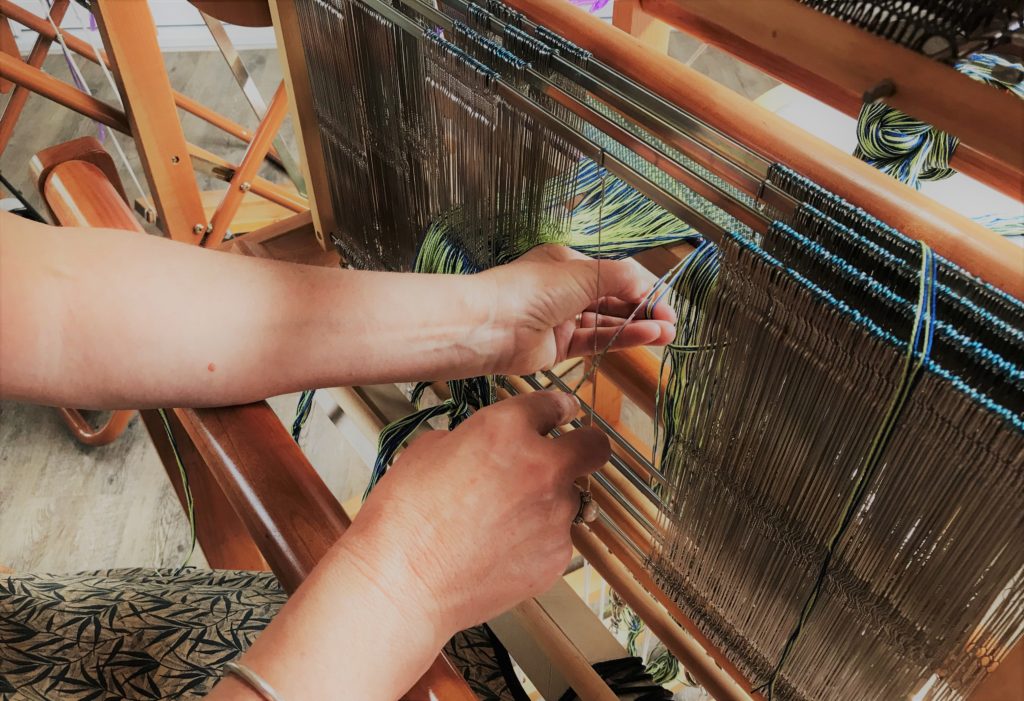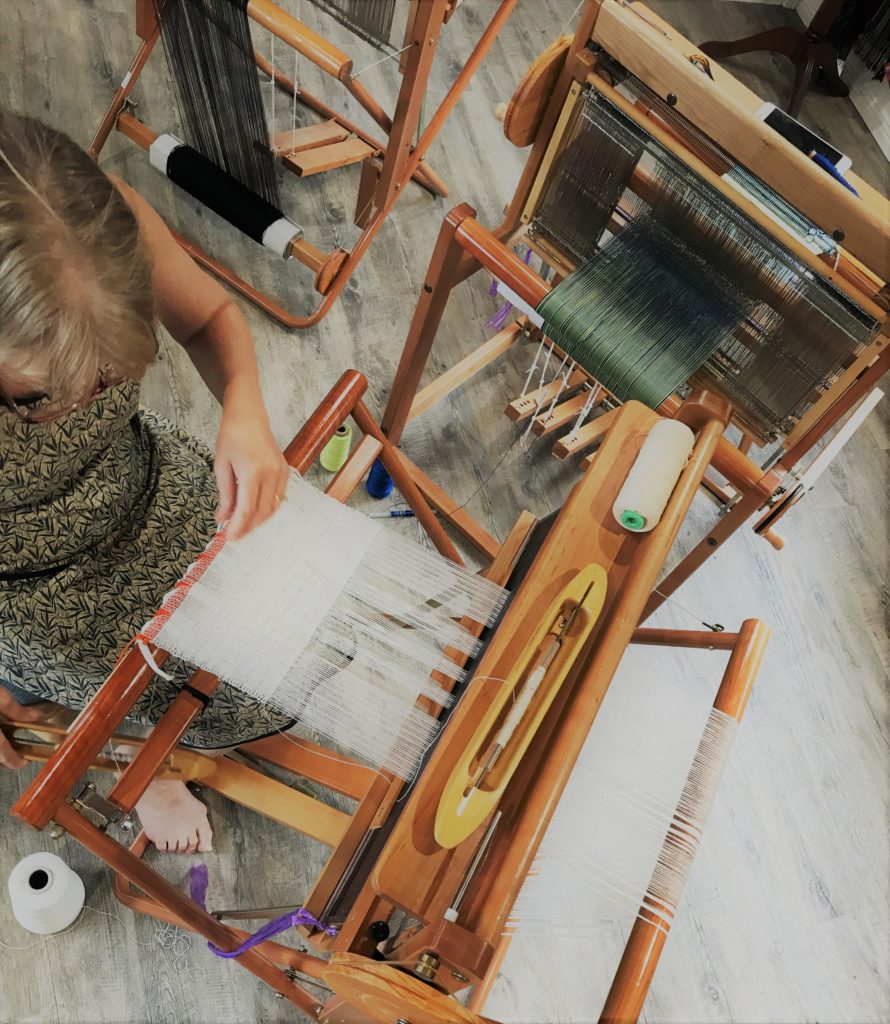By Fiona Durman of Ashculme Textiles, Wagga Wagga
When I thought about what I really wanted to learn on my residency I thought about the endless variations and scope of weavings and realised there is no limit to its possibilities. So I had to narrow it down. And narrow it down to those things not so easily learnt from a book. And to me, the double weave technique kept popping up. It seems to open up so many creative possibilities and holds a fascination that I have been very excited to explore.

So prior to my residency I wound on a warp of two distinctive colours, with the plan to thread this straight onto the loom for some double weave magic.
It was good to start the week with the concentration of threading this warp on. I always think of threading as the discipline before the creative play that is weaving.
I am very much a freestyle weaver, loving the freedom that the Saori weaving gives you, permission to create how and as you choose, it’s almost like your hands take the direction and you follow on. Not so with double weave. This week is about getting out of my comfort zone, following charts, graphs and instructions and having a clear end result in mind. So I switched my mindset and focused on learning these new techniques.

I first worked some rows as a simple plain weave, before separating the dark and light into the two separate layers of weave. As I got used to following the chart and I could see the results taking shape, I found my mind starting to work on the possibilities double weave can inspire. By working on the basics of structure, the possibilities of building on from that are endless. Tomorrow I will extend on the double weave, adding more details and techniques.

I also brought with me a white warp ready for some shibori weaving. It took a moment to set it up on the loom (thanks Kaz) and I made a good start. This weave is all white, no colour changes as you go as the magic will happen with those extra threads we weave in to create the resist for dyeing. I am adding texture though and am also planning to add the texture with other natural yarns – silk, cotton, linen – I am fascinated to see the resulting play of colour as the different fibres take up the dye differently.
More to come.

Leave a Reply